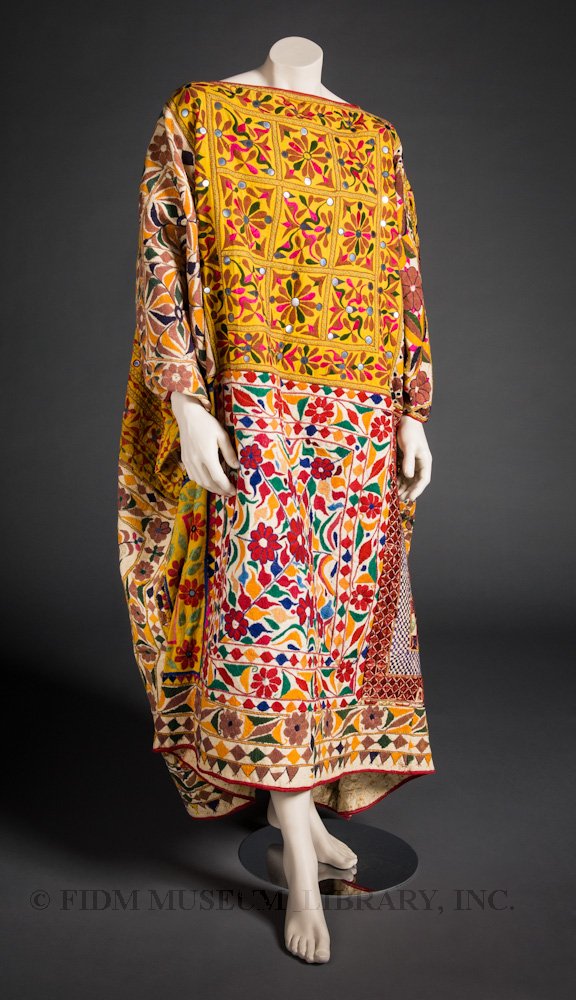Rudi Gernreich was born on this day in 1922! August 8, 2014 would have been his 92nd birthday. Born in Austria, Gernreich immigrated to the United States in 1938. After settling in Los Angeles, the fledgling designer produced his first collection in 1949. Intent on creating liberating designs, Gernreich would provoke and titillate the fashion industry and fashion consumers until his death from lung cancer in 1985.
The FIDM Museum is fortunate to have an extensive collection of Gernreich garments, patterns, and other ephemera. Together, these objects comprise the Rudi Gernreich Archive. We've featured Gernreich garments on our blog many times. To see other examples of Gernreich's work, revisit these archived posts.
 Embroidered caftan
Embroidered caftan
1970-75
Bequest of the Rudi Gernreich Estate
G85.331.2
Though this embroidered caftan bears an interior label reading "Rudi Gernreich," it wasn't designed by Gernreich himself. Based on the embellishment, we surmise that this multi-colored garment was purchased during a year-long sabbatical. In 1969, feeling fatigued by deadlines, Gernreich opted to take time off for "travel and rest."1 As he told a reporter in late 1968: " 'I don't have cancer or a brain tumor or any incurable disease. I just want to refresh myself.' "2 His first stop was reportedly North Africa, though this caftan suggests he also ventured to India.
Covered with embroidery, this caftan features shishadar or mirrorwork. This technique uses embroidery stitches to affix small bits of mirror to a durable base fabric and was likely developed as a way to mimic the alluring gleam of textiles embroidered with gold or silver thread. Shishadar probably originated sometime during the 17th century in the region now encompassed by Western India, Pakistan, and Afghanistan. Even today, it is used to decorate both garments and interior textiles. Though we don't have Rudi Gernreich's sabbatical itinerary, he probably purchased this caftan somewhere in western India, most likely in Gujarat.3
 G85.331.2-detail. Note the mirrorwork at the top and right of this image.
G85.331.2-detail. Note the mirrorwork at the top and right of this image.
The body-obscuring silhouette of this eye-catching caftan probably appealed to Gernreich's interest in liberating the body from constraining silhouettes. During his career, Gernreich designed many cocoon-like caftans. While on sabbatical, he purchased at least one other embroidered Indian caftan. Housed at the Kent State University Museum, it is extremely similar, but features different embroidery patterns. Like the caftan pictured here, it has a "Rudi Gernreich" label. He may have purchased them as gifts, or to retail under his own label as an embodiment of his ideas about clothing and its relationship to the body.
1 Morris, Bernadine. "Gernreich Taking a Year Off 'to Rest' " New York Times (Oct. 16, 1968) 42.
2 Sheppard, Eugenia. "Rudi Gernreich Plans Year Off: Designer to Take Holiday From Fashion Deadlines." The Washington Post (Oct. 18, 1968) C6.
3 Whitley, Lauren. Hippie Chic (Boston: MFA Publications, 2013) 99.


